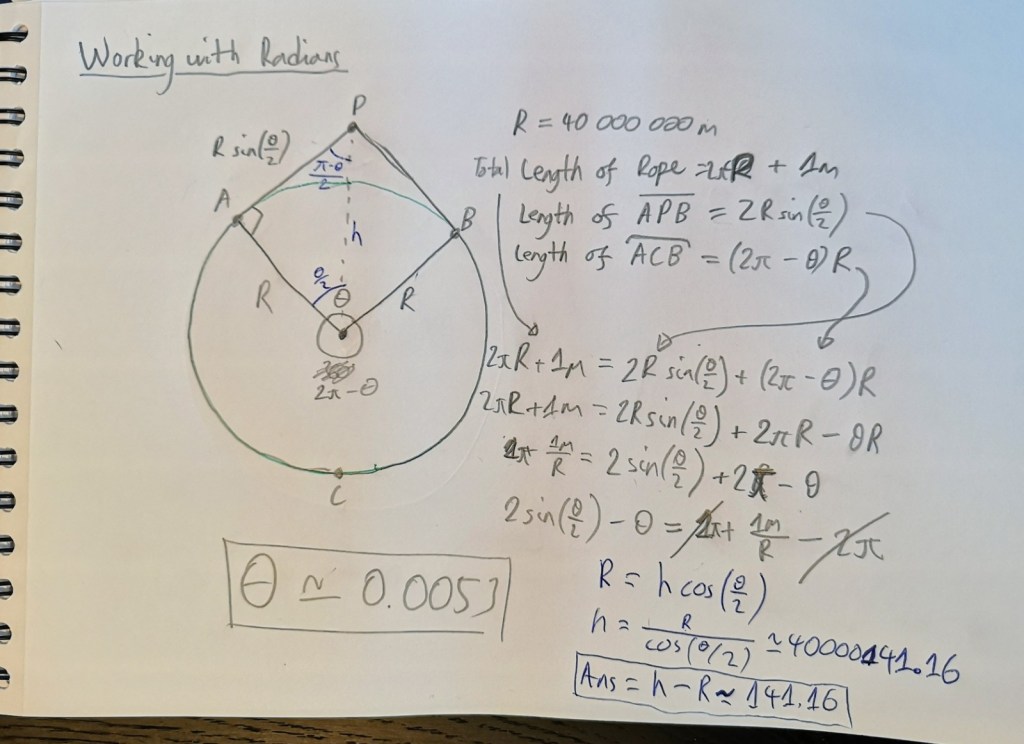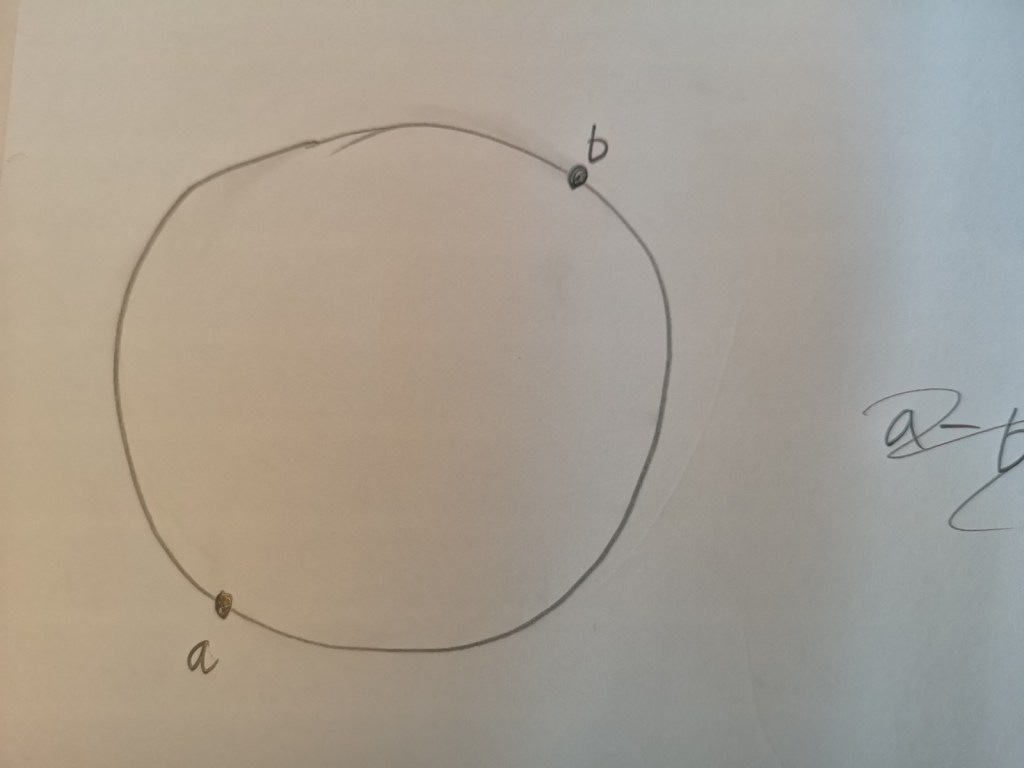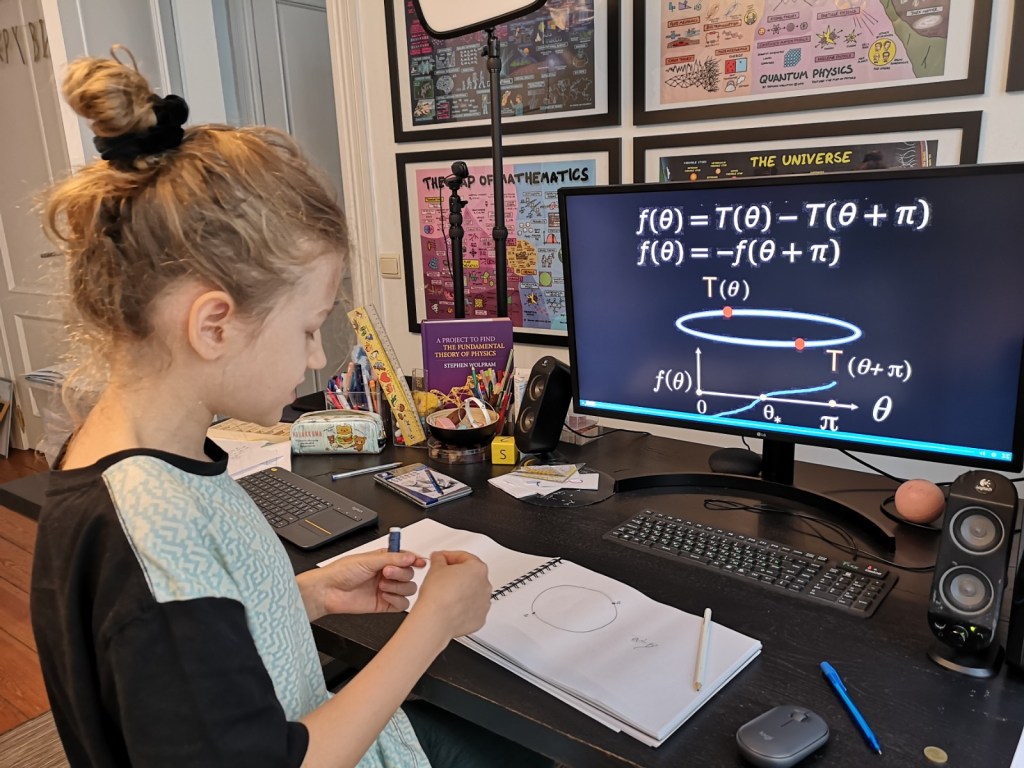Last weekend, Simon started this new school year’s first World Science Scholars course, A Beautiful Universe: Black Holes, String Theory, and the Laws of Nature as Mathematical Puzzles with Breakthrough Prize winner and Professor of Mathematics and Natural Philosophy at Harvard University, Cumrun Vafa. The first module of the course consisted of classic puzzles, some of which Simon already knew. In one of the puzzles, the scholars were asked to use Calculus to estimate how high a belt stretched around the Earth’s equator will rise above the Earth once the belt is pulled tight:

Simon says using Calculus for such open problems is still tricky for him, but he actually managed to answer this question using geometry:
Here is my 🌟 CALCULUS-FREE 🌟 solution to the last puzzle:

Unfortunately, he hasn’t got any feedback about his solution so far.
For another question, Simon said it’s a special case of the Borsuk–Ulam theorem:


Yet another question concerned dividing a circle into regions: what is the relationship between the number of intersection ponits and how many regions form:


So, in the answer choices of the previous question, the correct answer was “it grows by a combinatorial function”. I don’t like this, because some people might derive it a different way, when it’s a polynomial function instead of a combinatorial one. I do get that the answer choices are written this way, I just don’t think they’re the best they could be.
Also, here’s a beautiful video derivation of the formula: https://youtu.be/K8P8uFahAgc
Simon generally dislikes the formal approach in the way the course is explained. He would like to see more general discussion about these fundamental mathematical concepts that help build an intuitive understanding rather than excessively relying on formulas and definitions. Today, following Module 2 of the course that dealt with how Ramanujan-Hardy’s partitions of integers in number theory are related to/ applied in string theory, Simon got very upset because he felt like Professor Vafa’s teaching style didn’t resonate with him. He missed the in-between steps in Professor Vafa’s explanations and didn’t understand why Professor Vafa was mostly talking in formulas. The level of math was pretty much what Simon is used to, but something just felt off.


One Reply to “Simon’s first impressions of this year’s first course with World Science Scholars”